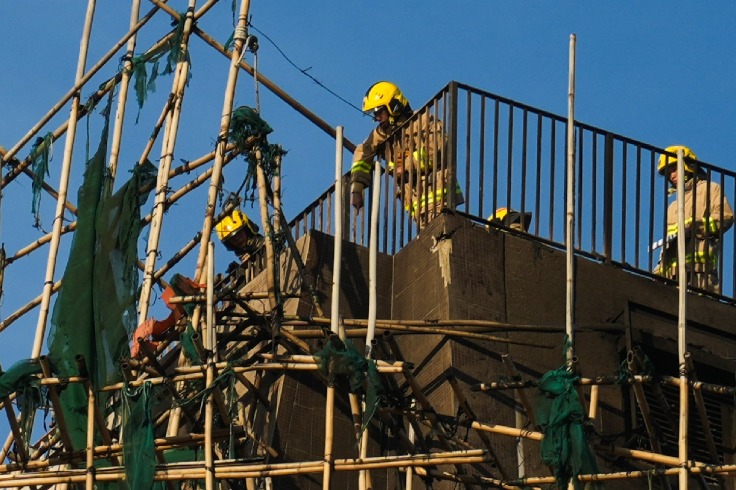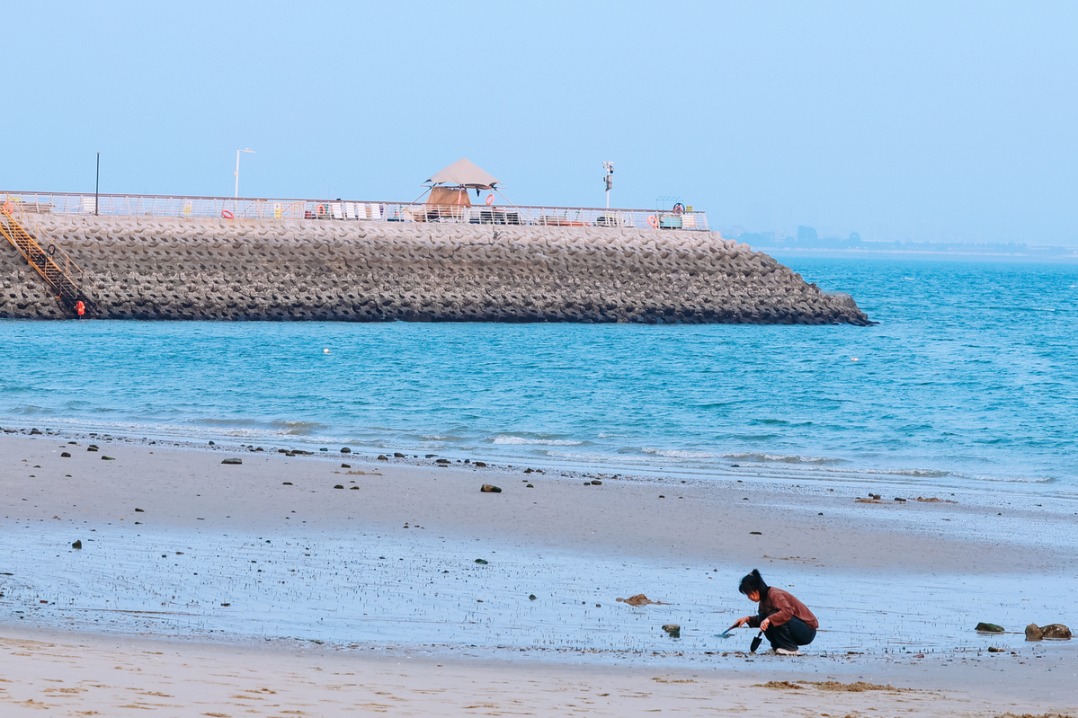Marine tech serves Belt and Road for common good

Hong Kong's regional, international strengths attract talent

Robots are collecting trash and fast-growing aquatic vegetation in the sea off the coast of Kerala, a state in southwest India, and in Varanasi, a city on the River Ganges in the north of the country.
The devices, which resemble a swimmer's kickboard, have a conveyor belt at the front to carry items found in waters to a metal basket at the rear.
In Hong Kong, a similar robot is working in the Kai Tak River, venturing into waters that are inaccessible to humans. This device is deployed under bridges being built across the waterway to link West Kowloon with East Kowloon.
The waters here are murky, and iron bars have been installed in a narrow space to support the construction work and prevent objects falling from overhead. These factors deter humans from entering the water to collect waste and debris. Instead, the conditions provide the perfect stage for robots.
The water current and rain produce a huge inflow of trash and sometimes dead fish. Twice a week, a device known as a Clearbot is commissioned to clear away this trash.
Clearbots, which are controlled via smartphones, were invented by Sidhant Gupta and Utkarsh Goel, students from India who graduated from the University of Hong Kong in 2019 and 2020.
The pair arrived in Hong Kong to study, not knowing that their work would eventually result in them "giving back" to their home country.
They gained inspiration from an exchange tour to the Indonesian resort island of Bali, a world-renowned tourist destination.
Instead of being attracted by the stunning scenery, Gupta and Goel were drawn by the trash floating on and buried in local waters — the result of years of burgeoning tourism activities.
Local residents gathered the trash by hand every day to keep the beaches clean. However, their efforts were merely a drop in the ocean.
Gupta and Goel decided to help by making apparatus that comprised aluminum plates, a fishing net and a camera. A drone, controlled by software, pulled the apparatus along to clear away trash.
This was the prototype for the Clearbot, which was later improved and upgraded into a fully fledged robot. The device won the pair awards and also HK$500,000($64,050) in seed funding from the Hong Kong Science and Technology Parks Corp and funds that included Jumpstarter, a not-for-profit initiative organized by Alibaba Entrepreneurs Fund.
In 2020, Gupta and Goel decided to launch a startup called Open Ocean Engineering, or OOE, in Hong Kong to focus on intelligent robotic boats.
The high cost of living and renting an office in Hong Kong can discourage startups, but for OOE, the city's geographic advantages outweighed its drawbacks.
As part of the Guangdong-Hong Kong-Macao Greater Bay Area, or GBA, the city is the ideal location for buying hardware and materials needed to build and test prototypes. Hong Kong also boasts sufficient venues for testing devices and it is easy to attract clients locally.
Gupta and Goel speak little Cantonese and cannot read Chinese, but as both of them are proficient in English, they do not encounter any language barriers.
Hong Kong's international standing also attracts a diverse range of talent, helping OOE build an international development team comprising members from the United Kingdom, France, the Chinese mainland and Hong Kong.
The company has manufactured 10 Clearbots, which it rents for clearance and delivery work within a radius of 5 kilometers. A Clearbot can carry a maximum load of 200 kilograms of waste on each mission, and can work for four hours on a full charge.
To command the robot, the developers built an online dashboard — a website that can be checked from a computer or via a smartphone. Operators using the dashboard set routes for the robots, check their speed, turn the conveyor belt on and off, and switch between automatic and manual modes.
In automatic mode, the robots, navigated by GPS and the remote sensing system LiDAR, conduct operations autonomously. To further save manpower and maximize the robots' efficiency, one trained operator can control three to five Clearbots at the same time, Gupta said.
In comparison, two to three people are needed for a clearance team, with one to control the boat and the others to collect trash floating on the water.
OOE's clientele includes government departments, private companies and social organizations.
Although the robots share a fundamental design, they can be customized for different scenarios. For example, the Hong Kong Drainage Services Department rents a tailor-made device to clear foam generated during wastewater treatment at water processing plants, Gupta said.
The robots also boast functions to aid marine conservation. The camera on each device takes photos of every piece of trash that is picked up. An inbuilt processing unit powered by artificial intelligence identifies and catalogues information about the trash, and generates related charts and graphs. This feature helps clients monitor littering trends through data and formulate appropriate policies based on analysis.
The arrival of the Clearbot reflects the way in which talent from other countries and regions are using Hong Kong's unique strengths regionally and internationally to develop marine technology.
The mainland's mature supply chain is also vital to Gupta's team. Almost all the electronic components and batteries for the Clearbot are manufactured in Dongguan, Shenzhen and other cities in the GBA, he said.
The Clearbot team is still in its infancy, but an ambitious plan has been drawn up to provide marine clearance solutions for developing countries, especially those in Southeast Asia that are taking part in the Belt and Road Initiative, and where demand is rising for such work.
Gupta and Goel's overseas market expansion starts with India, their home country. A few weeks ago, two Clearbots were sent to India to help clear trash and uproot aquatic vegetation in local waters.
The water conditions and environment in Southeast Asia are similar to those in Hong Kong and India, Gupta said, adding that if Clearbots prove to be a success in one area, they can do well elsewhere.
Gupta has also noticed potential opportunities generated by the BRI, which was put forward by China in 2013 to connect Asia with Europe, Africa and beyond through an unparalleled trade and infrastructure network. The BRI involves numerous coastal developing countries in Asia and Africa.
The BRI can provide OOE with more opportunities to meet business partners in a post-COVID-19 world, Gupta said.
One of the BRI's key goals is to promote global marine environmental protection. This work includes tackling debris and pollution in oceans, according to the Vision for Maritime Cooperation under the Belt and Road Initiative released by the Chinese government in 2017.
Hong Kong provides a good foundation for startups such as OEE to attract capital.
Global investors have approached the company, which in September announced it had received a round of seed funding led by Alibaba Hong Kong Entrepreneurs Fund, or AEF.
The investment is part of the prize Gupta's team won from the Jumpstarter 2022 Global Pitch Competition, an event organized by AEF to match junior entrepreneurs worldwide with potential investors. As one of the event's two winners, OEE is guaranteed investment totaling $4 million from AEF, Hong Kong Cyberport Management Co, and Hong Kong Science and Technology Parks Corp.
- Allan Zeman slams Western media bias in Tai Po fire tragedy
- Retired ornithologist recalls search for last of a species
- 'Oriental gem' makes wetland comeback
- Free entry hoped to spur spending at scenic spots
- China's green think tanks on the rise
- Factory tours give peek behind curtain of manufacturing marvel





































